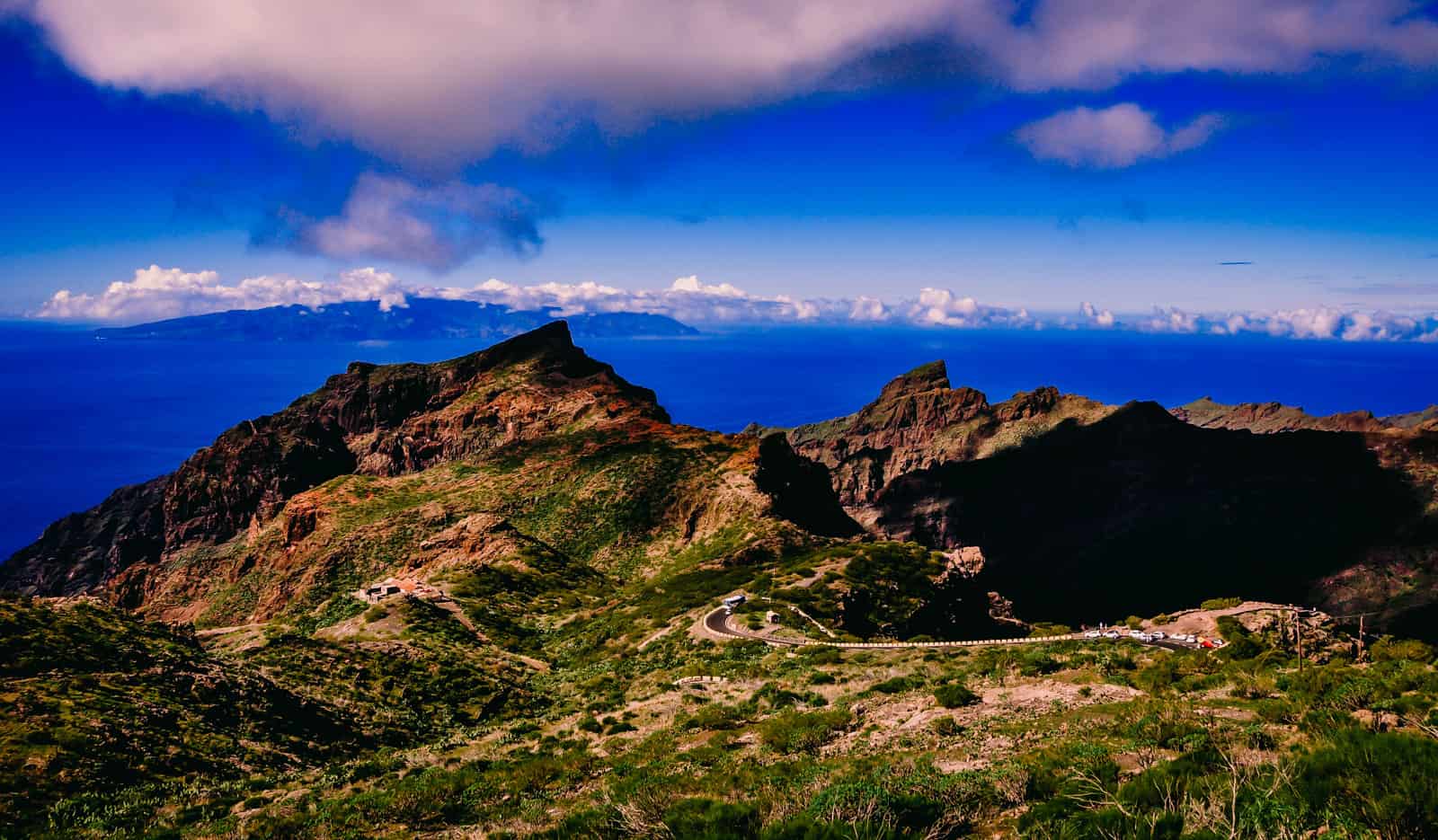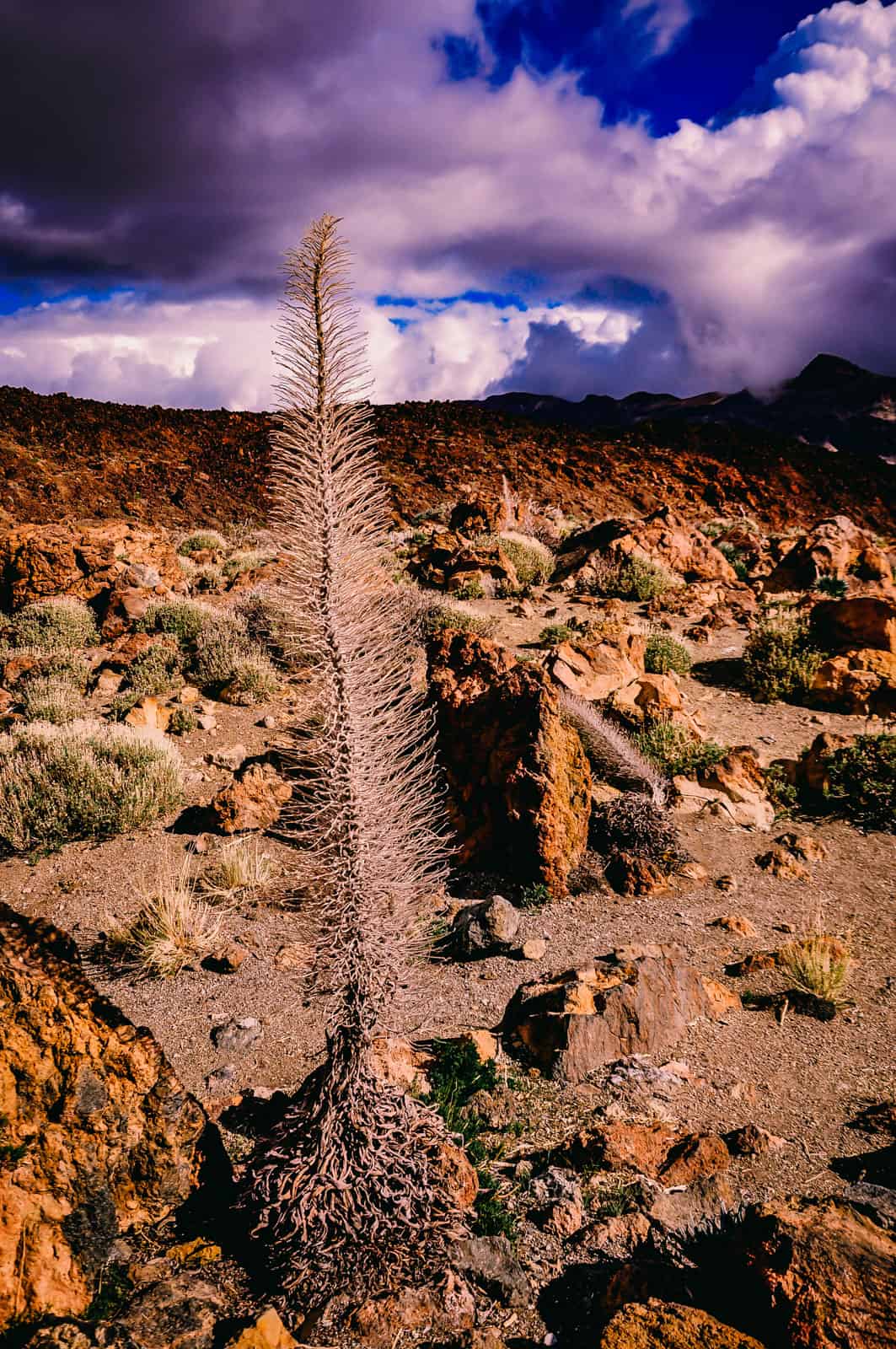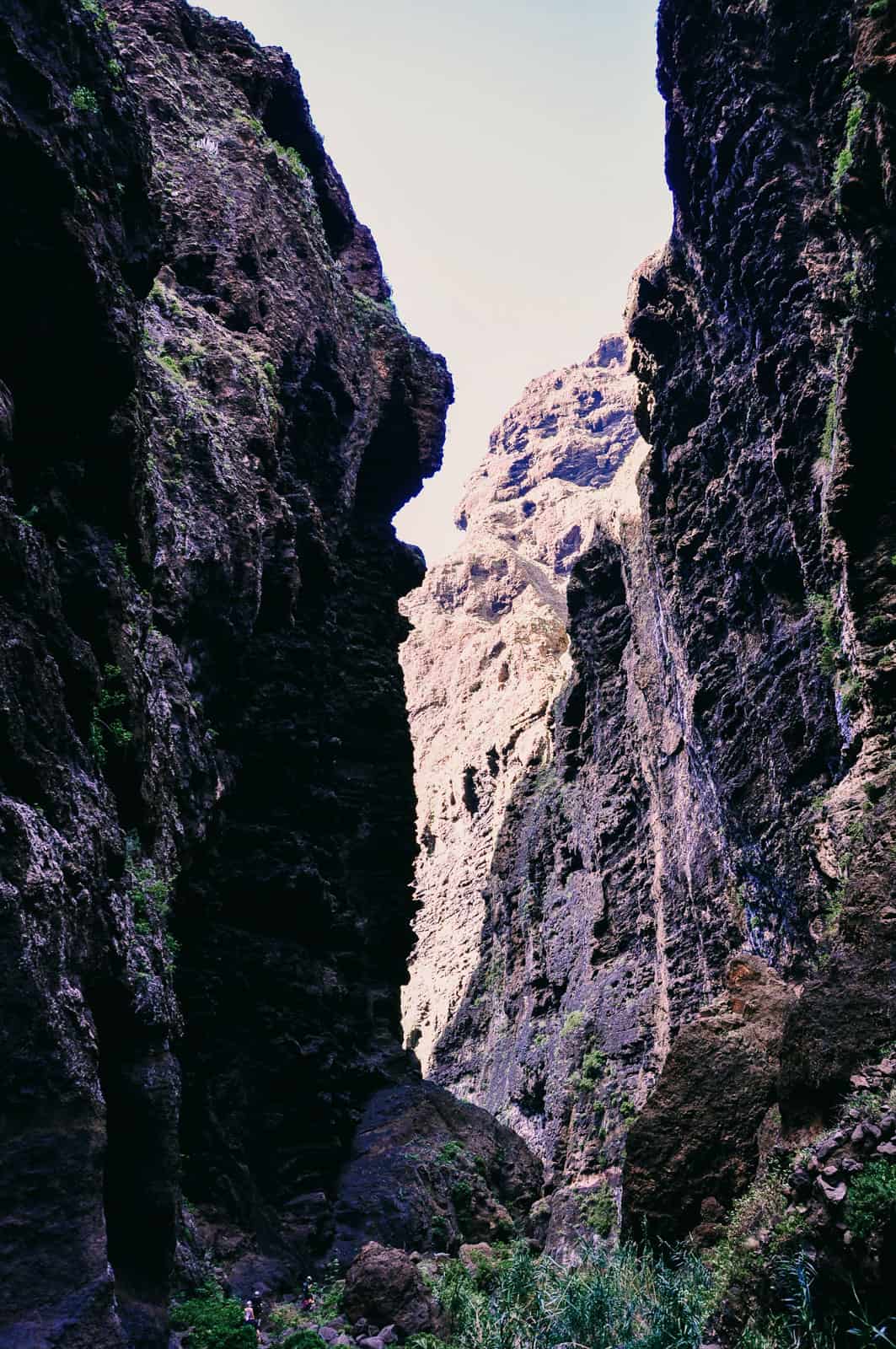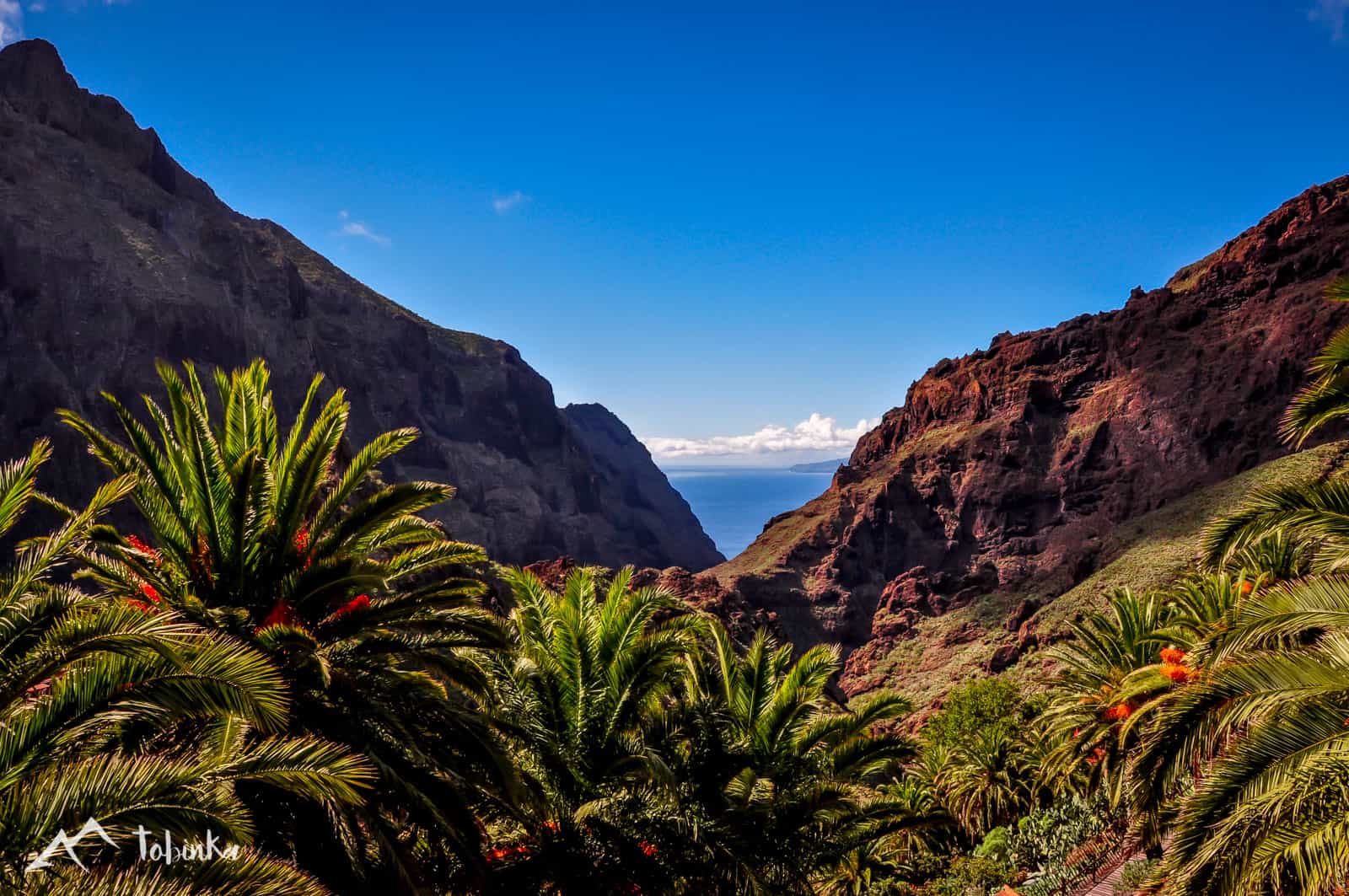Hike | Tenerife | Spain
Hiking Guide for Tenerife: Teide, Masca Gorge and Anaga Mountains
Text | Anninka Kraus
Photography | Tobias Kraus

Spain Tenerife
Tenerife is an autonomous territory of Spain and located in the North Atlantic Ocean roughly 200 miles west of mainland Africa, where Morocco borders on Western Sahara.
The island is the largest of seven Canary Islands, around 2000 square kilometres in size and home to Mount Teide (Pico del Teide), an active volcano (its last eruption occurred in 1909) and the highest mountain of Spain at 3718m.
Why you should go hiking in Tenerife
Tenerife is known for its diverse landscapes and as a renowned hiking destination. The southern coast, around Los Cristianos and Costa Adeje is all about beaches and warmer climes but at times feels exploited and crowded with tourists.
This is where most hotels are situated and tourists flock to the beaches in November, when Central Europe suffers through sleet, fog and the first snow slush of the season.
The north, where the island’s capital Santa Cruz and the pretty university town of La Laguna are situated, appears almost deserted in comparison.
Yet it’s only about an hour’s drive from Playa de las Americas, Tenerife’s party capital in the south to Parque Rural de Anaga in the north, a forested mountain range that was declared a biosphere reserve by the UNESCO and offers great hiking trails and some solitude.
jump ahead.
Walk to 3555m in Teide National Park, a landscape that resembles conditions on Mars
Enjoy beautiful ocean views in the sparsely populated Anaga Mountains






Tenerife | Spain
Hike | Point-to-point trail | 3-5 hours
Hiking in Teide National Park
The moon landscape we met when we entered the large caldera in Teide National Park (Cañadas del Teide National Park), in the centre of the island, on route TF-21 via Vilaflor was unlike anything we had ever seen. It’s a rocky wasteland of craters, solidified lava flows, and debris – was so unreal and forboding, that it is almost frightening.
Whereas Tobi revels in barren, alpine surroundings I usually miss colour and signs of life at higher altitudes. The sight of a volcano cone rising unexpectedly from this reddish-brown petrified lava landscape, devoid of vegetation except sparsely strewn straw-coloured tussocks and imperishable green shrubs, however, was fascinating.
By the time we passed the lower cable car station (Teleférico del Teide) and arrived at the trailhead for Refugio de Altavista (a mountain hut about half-way up to the peak of Mount Teide) at Montaña Blanca Sendero, the parking lot across the road had filled up already.
In that case, you can head back 850m to Tabonal Negro parking and walk along the road to the start of the trail, a gently climbing 4WD track (don’t think about shortcutting by driving up the track and parking higher up – from what we heard the rangers rigorously enforce all the park rules and cars are not allowed on the track).
After 50 minutes (4km) leisurely walking up a modest slope, we arrived at the Teide Eggs (Los Huevos del Teide) which are very large round balls of lava strewn about on a level plain that look like, well eggs, or giant marbles. This hike is all about rock, which, as I said before, surprisingly didn’t bother me.
The caldera resembles conditions on Mars so closely that astrologist come here to do research, and as I believed this was the closest I will ever get to setting foot on Mars, I was determined to appreciate rocks of all shapes and sizes (and colours) on this hike.
After 1:15 hours the dirt track narrowed to a steeper hiking trail that still wasn’t particularly challenging but, after 2:10 hours when we reached Refugio de Altavista at 3270m elevation, we began to feel the effects of ‘thin’ air at high altitudes. A low dense cloud cover hung around all day and obscured views of the island’s shoreline and the ocean beyond. The volcano cone rose well above the clouds however and the trail snaking up the slope was well visible for lack of vegetation.
We arrived at the well-frequented tourist trail that connects the upper cable car station with Mirador La Fortaleza after 3 hours hiking. The estimated time for this climb is 4-5.5 hours, however this feels very generous as we didn’t rush. The rather large number of gondola tourists floundering about in flip-flops and wearing T-Shirts at temperatures in single figures was hilarious as they had obviously misjudged the temperature at an elevation of 3555m above sea level.
We were sweaty from the hike and it was chilly as soon as we rested even on a very sunny day and wearing softshell jackets. Nevertheless, I made the very same mistake as many of these tourists a few days later when we were heading northwest towards Garachio and traversed the caldera again.
With temperatures in the mid-twenties along the shoreline I wore flip-flops, shorts and a T-Shirt and thought that a quick stroll to some viewpoints in the caldera couldn’t be all that bad in this attire if I just walked fast enough. Tobi kindly captured the moment when it started snowing and I watched snowflakes descend onto my naked feet. I hope this forever remains the only photo of me wearing flip-flops in the snow.
In case you want to access the crater summit, 200m higher up in elevation than the upper cable car station, you need to apply for a special permit beforehand. On the gondola we whisked down the slope in barely ten minutes, which I appreciated as a hint of mockery of the arduous ascent.
From the lower cable car station at kilometre 43, it’s a 3 kilometres walk back to the trailhead along a rather well frequented road (by Tenerife standards), so take care.
track details.
Route: Montaña Blanca Sendero or Tabonal Negro parking – Los Huevos del Teide – Refugio de Altavista – upper cable car station Teleférico del Teide
Distance: 8.5km
Time: 3 hours (stated: 4 and 5.5 hours to Refugio de Altavista)
Elevation gain: 1191m
Elevation loss: 35m
Start: Tabonal Negro Parking (lowest point: 2364m)
End: Teleférico del Teide upper cable car station (highest point: 3555m)








The Teide Eggs (Los Huevos del Teide), which are very large round balls of lava strewn about on a level plain that look like, well eggs, or giant marbles.
Tenerife | Spain
Hike | Out & back trail | 4 hours
Hiking through the Masca Valley Gorge
Masca, situated along route TF-436 on the western shore of Tenerife, is a pretty, little settlement clinging to the slopes of the Teno massif at the entrance to Masca Barranco, a gorge descending 6 kilometres and more than 700m in elevation to sea level. All parking spots in Masca were taken, so we continued up the road, pulled up at the roadside a kilometre out of the tiny hamlet, and backtracked to the trailhead in the village centre.
We were surprised by the large number of tour busses squeezing through the small gathering of old stone houses, fruit trees, and palms, and also a crowd of pensioners milling about, who didn’t strike me as seasoned hikers. We watched people grip the handrails tightly as they unsteadily staggered down the steps from a bus and then actually started for the trailhead.
We had seen this hike advertised as ‘for everybody’ by several tour companies, which I believe is misleading. While the track is easily manageable for experienced hikers, the difference in elevation on rocky terrain is no stroll in the park and requires a certain level of sure-footedness and stamina. I believe challenging yourself with a demanding hike is a splendid idea.
Yet the sheer number of senior citizens in guided groups stumbling into the gorge, hopelessly out of their depth, was astounding.
The trail itself, twisting down into the narrow gorge, was slippery in parts and we used our hands for support several times as we scrambled across large boulders or crawled beneath rock overhangs.
As we descended into the gorge, it was fascinating to watch the scenery change from a surprisingly green plant cover, fed by waterfalls and dotted with small ponds in the upper part of the valley to steep cliff faces on either side closing in on us that blotted out the sunlight and provided us with some welcome shade.
The narrow chasm amplified every sound. So when the path levelled off towards the bottom of the gorge and we heard the sound of running water bouncing off the rock walls, I thought that we were close to yet another waterfall. But it turned out that I had heard the waves crashing onto a black pebble beach.
A group of hikers was waiting on a jetty from where a water taxi shuttles people back and forth between Los Gigantes and the beach several times a day. Most hikers, it appeared, walked in one direction only, the majority downhill, and took the boat shuttle on the return trip.
We had sandwiches on the beach and then started on the relentless uphill scramble. The climb was particularly rewarding the closer we drew to the top and watched cacti and palm trees returning to the rocky valley floor in increasing numbers.
track details.
Route: Masca – Playa de Masca – Masca
Distance: 12km
Time: 4 hours
Elevation: 743m gain / 714m loss
Start/End: Masca (highest point: 723m/ lowest point: 31m)










As you descend into the gorge, the scenery changes from a surprisingly green plant cover, fed by waterfalls and dotted with small ponds in the upper part of the Masca Valley to steep cliff faces on either side, slowly closing in on you.
Tenerife | Spain
Hike | Loop trail | 2-3 hours
Hiking in the Anaga Mountains
After hiking through landscapes that closely resemble conditions on Mars in Teide National Park and a day later descending into the narrow and steep Masca Gorge on Tenerife’s west coast, we were craving some lush greenery.
At the hotel reception they recommended we head towards the Anaga Mountains that are supposedly the greenest part of the island located on its north-easternmost tip. We were staying in Costa Adeje on the opposite side of the island from Parque Natural de Anaga, but photos of this biosphere reserve looked promising enough to embark on a 1.5 hour drive to Chamorga.
Via San Cristóbal de La laguna, a university town northwest of Tenerife’s island capital Santa Cruz, we followed route TF-13 eastbound that merges into route TF-12 as the road climbs into the mountains that were indeed densely forested with increasing elevation.
Several viewpoints along the road would have offered great panoramas but were cloaked in heavy mist that cleared as we descended towards Chamorga. The vegetation blanketing the rugged hillsides thinned as the mist lifted and the slopes dropped away to bays and beaches lining the seashore.
We parked in Chamorga, a scattering of whitewashed homes, and set off on a trail of red soil that steadily descended towards the shore, past cacti and palms. After 1:10 hours we arrived at Roque Bermejo, which was advertised as a small fishing village – accessible only by foot or boat – but at the time appeared completely deserted.
As this area is so sparsely populated the coastline remained untouched, harsh, and extraordinarily beautiful. We had lunch on the beach and there wasn’t a soul in sight. On the climb up we passed by Punta de Anaga Lighthouse (Faro de Anaga) and terraced fields where vegetables were cultivated on gentle slopes.
track details.
Route: Chamorga – Playa de Roque Bermejo – Punta de Anaga Lighthouse (Faro de Anaga) – Chamorga
Distance: 8.5km
Time: 2.45 hours
Elevation gain: 641m
Elevation loss: 655m
Start: Chamorga (highest point: 630m)
End: Roque Bermejo (lowest point: 35m)







